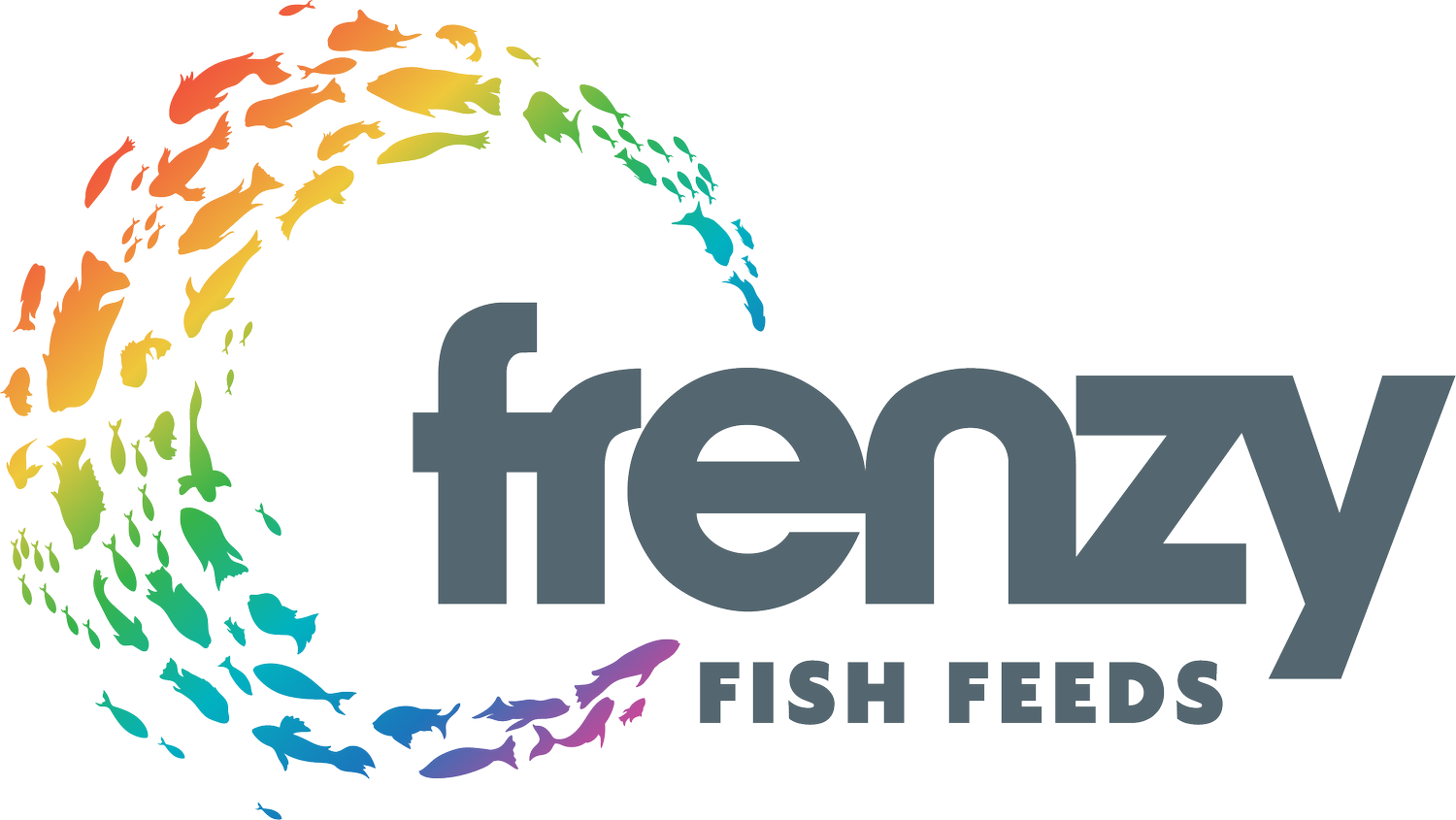Feeding Guides & Instructions
Feeding guide for FRENZY FISH FEEDS high protein pellets:
Proper feeding is crucial for the health and well-being of your aquarium fish. Follow this general feeding guide to ensure you're providing the right amount of nutrition with our aquarium fish pellets:
Understand Fish Species: Different fish species have varying dietary requirements. Research your specific fish species to determine their feeding habits, preferred food types, and recommended feeding frequency. If in doubt just contact us.
Portion Control: Start by offering a small amount of pellets that your fish can consume within 2-3 minutes. Overfeeding can lead to water quality issues and health problems. Our pellets are high in protein and will foul the water if left uneaten in the tank for long periods of time. If there are uneaten pellets after feeding, adjust the portion size accordingly during the next feeding.
Feeding Frequency: Feed your fish 1-2 times a day. Smaller fish may require more frequent feedings, while larger fish can be fed once a day. Be consistent with your feeding schedule to establish a routine.
Observation and Adjustments: Observe your fish during feeding to ensure they are actively consuming the pellets. If they seem disinterested or hesitant, adjust the portion size or try soaking the pellets in water briefly to soften them. Some fish species may prefer floating pellets, while others prefer sinking ones. Choose the pellet type based on your fish's feeding behavior.
Supplement with Variety: While our fish pellets are designed to provide complete nutrition, it's beneficial to supplement their diet with occasional treats such as frozen or live foods and different types of food such as flakes. This adds variety and helps simulate their natural feeding behaviors.
Water Quality: Uneaten pellets can contribute to poor water quality. Remove any uneaten food after feeding to maintain a clean and healthy aquarium environment. Regular water testing and maintenance are essential to ensure optimal conditions for your fish.
Adjustments for Growth and Breeding: During periods of rapid growth (fry) or breeding, your fish may require increased feeding. Make sure you research species-specific guidelines or seek advice from experts for precise feeding recommendations during these stages.
Remember, each fish is unique, and their dietary needs may vary. It's essential to research and tailor your feeding practices to suit your specific fish species. Regular observation, maintaining a balanced diet, and providing a clean aquarium environment are key to promoting the health and longevity of your aquatic companions. By following this feeding guide and continually monitoring your fish's behavior and health, you can ensure they receive the nourishment they need for a thriving aquatic life.
How to conduct water changes:
Conducting aquarium water changes is an essential task to maintain a healthy and balanced aquatic environment for your fish. Follow these steps to conduct proper water changes:
Gather Supplies: Prepare all the necessary supplies, including a clean bucket, a siphon or gravel vacuum, water conditioner, and a water testing kit.
Turn off Equipment: Before starting the water change, turn off any equipment such as filters, heaters, and lights to ensure safety during the process.
Siphon Gravel: Using a siphon or gravel vacuum, gently insert it into the substrate to start the siphoning process. Move the gravel vacuum across the substrate to remove debris, excess food, and fish waste. Be careful not to disturb the gravel too much to avoid uprooting plants or disturbing beneficial bacteria colonies.
Remove Old Water: Direct the other end of the siphon into a clean bucket or drain, allowing the old water to flow out. Remove approximately 20-30% of the total volume of the aquarium water. Adjust the amount based on the specific needs of your aquarium and the water parameters.
Clean Decorations: If there are any decorations or artificial plants covered in algae or debris, gently scrub them with a soft brush or sponge. Rinse them with water before placing them back into the aquarium.
Prepare New Water: While the old water is draining, prepare the new water for the aquarium. Use a water conditioner, to remove chlorine or chloramine and make the tap water safe for fish. Ensure the new water is at a similar temperature to the aquarium to avoid shocking the fish.
Refill the Aquarium: Slowly pour the prepared new water into the aquarium, taking care not to disturb the substrate or create strong currents. Gradually fill the tank to the appropriate level, ensuring a smooth transition for the fish.
Test Water Parameters: After the water change, test the water parameters such as pH, ammonia, nitrite, and nitrate levels to ensure they are within the desired range. Adjust as necessary to maintain a stable and healthy environment.
Restart Equipment: Once the water change is complete and the new water is added, restart the equipment, including filters, heaters, and lights.
Clean and Store Equipment: Rinse and clean the siphon or gravel vacuum thoroughly to remove any debris. Properly store the equipment for future use.
Regular water changes, typically performed once every 1-2 weeks, help remove pollutants, maintain water quality, and support the overall health of your fish and plants. Adjust the frequency and volume of water changes based on the specific needs of your aquarium and the recommendations for your fish species.
Note: It's essential to research the specific requirements of your fish species and consult with experts for personalised guidance on conducting water changes in your specific aquarium setup.
